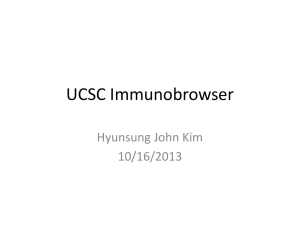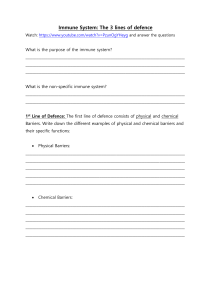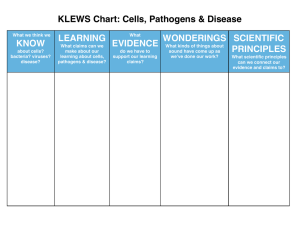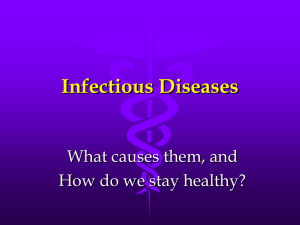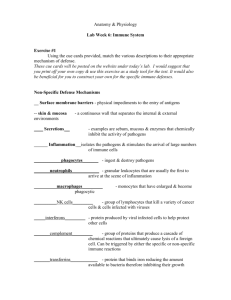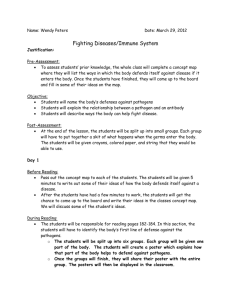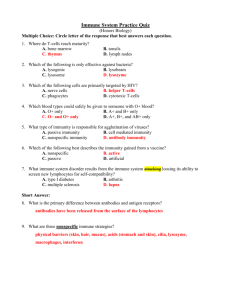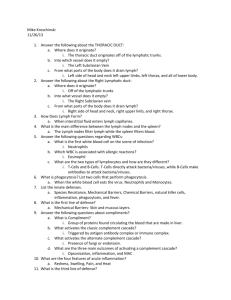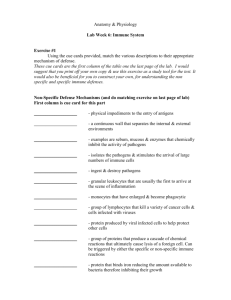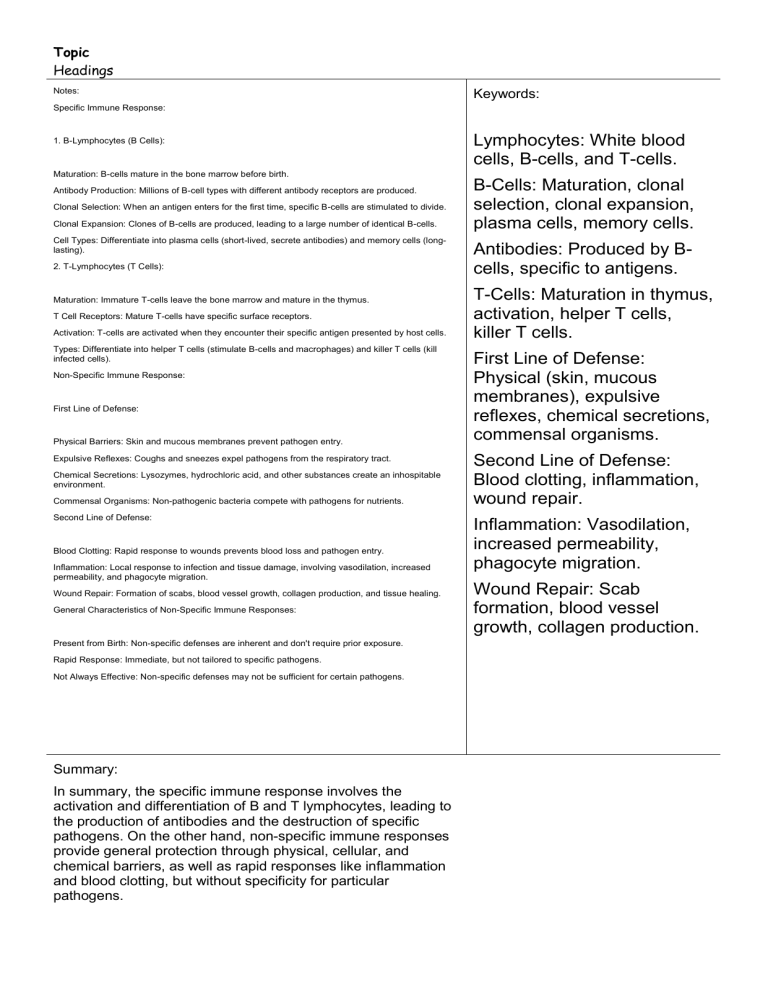
Topic Headings Notes: Keywords: Specific Immune Response: 1. B-Lymphocytes (B Cells): Lymphocytes: White blood cells, B-cells, and T-cells. Maturation: B-cells mature in the bone marrow before birth. Antibody Production: Millions of B-cell types with different antibody receptors are produced. Clonal Selection: When an antigen enters for the first time, specific B-cells are stimulated to divide. Clonal Expansion: Clones of B-cells are produced, leading to a large number of identical B-cells. Cell Types: Differentiate into plasma cells (short-lived, secrete antibodies) and memory cells (longlasting). 2. T-Lymphocytes (T Cells): Maturation: Immature T-cells leave the bone marrow and mature in the thymus. T Cell Receptors: Mature T-cells have specific surface receptors. Activation: T-cells are activated when they encounter their specific antigen presented by host cells. Types: Differentiate into helper T cells (stimulate B-cells and macrophages) and killer T cells (kill infected cells). Non-Specific Immune Response: First Line of Defense: Physical Barriers: Skin and mucous membranes prevent pathogen entry. Expulsive Reflexes: Coughs and sneezes expel pathogens from the respiratory tract. Chemical Secretions: Lysozymes, hydrochloric acid, and other substances create an inhospitable environment. Commensal Organisms: Non-pathogenic bacteria compete with pathogens for nutrients. Second Line of Defense: Blood Clotting: Rapid response to wounds prevents blood loss and pathogen entry. Inflammation: Local response to infection and tissue damage, involving vasodilation, increased permeability, and phagocyte migration. Wound Repair: Formation of scabs, blood vessel growth, collagen production, and tissue healing. General Characteristics of Non-Specific Immune Responses: Present from Birth: Non-specific defenses are inherent and don't require prior exposure. Rapid Response: Immediate, but not tailored to specific pathogens. Not Always Effective: Non-specific defenses may not be sufficient for certain pathogens. Summary: In summary, the specific immune response involves the activation and differentiation of B and T lymphocytes, leading to the production of antibodies and the destruction of specific pathogens. On the other hand, non-specific immune responses provide general protection through physical, cellular, and chemical barriers, as well as rapid responses like inflammation and blood clotting, but without specificity for particular pathogens. B-Cells: Maturation, clonal selection, clonal expansion, plasma cells, memory cells. Antibodies: Produced by Bcells, specific to antigens. T-Cells: Maturation in thymus, activation, helper T cells, killer T cells. First Line of Defense: Physical (skin, mucous membranes), expulsive reflexes, chemical secretions, commensal organisms. Second Line of Defense: Blood clotting, inflammation, wound repair. Inflammation: Vasodilation, increased permeability, phagocyte migration. Wound Repair: Scab formation, blood vessel growth, collagen production.
